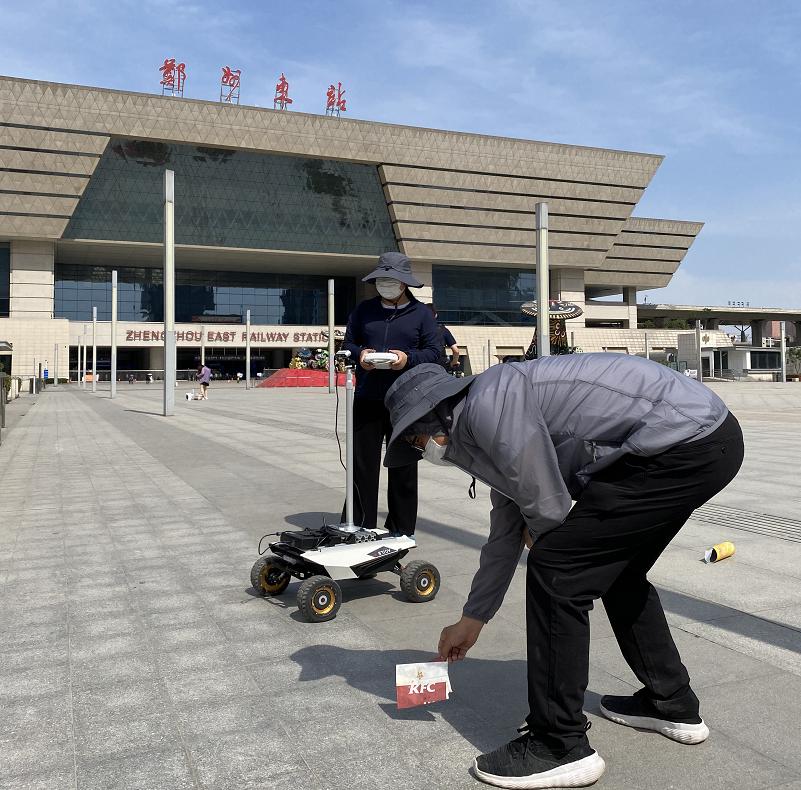Researchers in USST have never failed to seize every opportunity to be bold. Sky is the limit when it comes to the place for scientific research.
With the rapid development of the construction industry, the problem of cutting corners has arisen in the pursuit of progress in construction projects. One of the most notorious means is to replace standard steel bars with those of substandard diameters or even bamboo sheets. Therefore, the supervision of construction quality requires the examination of the diameters, positions and materials of the bars embedded in the wall. Traditional techniques of such examination are generally to drill holes in the wall, which not only damages the building, but also fails to examine every steel bar. Jerry-built projects can thus, to a certain extent, get away with it by stealth.

The “THz wall reinforcement detector” is led by Professor Yuan Minghui from the School of Optical-electrical and Computer Engineering. It is compact and portable, and takes advantage of characteristics of terahertz waves and millimeter waves, i.e. their high penetrability into nonmetallic building entities such as cement, bricks, lime, etc. and almost zero penetrability into metals, which permits the examination of diameters, positions and materials of the bars without damage to the wall. Now, jerry-built projects have nowhere to hide.
The repetitive examinations and analysis of massive data never tire professor Yuan Minghui. Just as he said, "Summer vacation is the prime time for scientific research. We all hope to make good use of it and solve some practical application problems through tests. We should contribute our professional knowledge to the improvement of engineering quality."

Under the scorching sun, professor Liu Na from the School of Medical Instrument and Food Engineering with students from the Institute of Machine Intelligence is collecting data in Zhengzhou East Railway Station West Square and the Forest of Zhengzhou which are overcrowded with people streaming. They are going through the trash cans in an organized manner. Some of them are responsible for sorting out the trash, some others recording it on paper. For the intelligent cleaning robot they are developing, the trash is deemed as treasure for big data algorithm learning.

The intelligent cleaning robot mentioned above is different from its domestic peers. As a new member of the Institute of Machine Intelligence of USST, besides the capabilities of actively discovering rubbish in the work area and grabbing it independently and intelligently, the robot’s trump is to climb stairs and obstacles up to 15cm high in an independent and continuous way with an omnidirectional movement system. In order to ensure its ability to recognize more garbage of different sizes, colors, and shapes, manual collection is required to provide samples for the learning of big data algorithms, so that the robot's vision algorithm for intelligent identification and garbage location keeps improving.
"The globe is now hit by the pandemic. Crowded areas like train stations are major prevention areas that are prone to cross-infection. If cleaning robots can eventually replace sanitation workers, the prevention and control of pandemics is to well benefit from it. I sincerely hope what we are doing will make a difference." said Liu.



